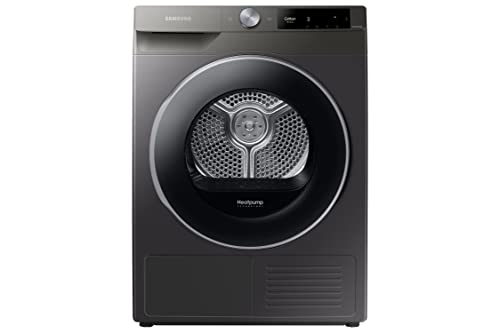The Most Pervasive Problems With Heat Pump Dryers

Heat Pump Dryers Save Energy and Eliminate Potential Fire Hazards
Conventional dryers heat air using gas or electric resistance, blow it over tumbling clothes and vent the warm, moist air outside. The dryers that use heat pumps do not require vents. This helps save energy and prevents fire hazards caused by lint accumulation within the vents.
These machines also use lower temperatures, and are gentler on clothing. They may take longer to finish drying than traditional machines. Learn more about these ventless laundry machines from Aztec Appliance.
Efficiency
You can save lots of money on your electricity bill by using the heat pump dryer. It uses up to 28% less energy than a traditional clothes dryer according to Energy Star. It might not sound like much however, if you are doing 20 loads of laundry each week in Massachusetts where electricity rates are among the highest in the United States it will save you hundreds of dollars over twelve years.
A heat pump dryer is similar to a dehumidifier. It starts with air which is heated by a compressor and then pushed through a second set of coils to warm it even more. In this process, the hot air draws moisture from the clothing into the heat exchanger where it's condensed. It then drips into a pan which can be manually empty or connected to drain tubes. The cooled, moist air then circulates through the condenser coils, to be then heated and the cycle starts again.
Heat pump dryers don't require an exhaust vent, which means they can be used in places that aren't able to be able to accommodate a conventional dryer. They are also more efficient and quieter and suitable for apartment spaces and other rooms with limited space. In addition, they are safer than dryers with vents, which can be dangerous if not maintained regularly.
However, as they operate at lower temperatures than conventional dryers, it will take longer for your laundry to dry with the help of a heat pump dryer. Additionally, because they work similar to a dehumidifier, and produce lots of water during drying, it's important to clean your heat pump dryer regularly. This is especially important if your clothes are damp or you reside in an area that is humid. It is possible to do this by regularly inspecting and cleaning the lint screens as well as the condenser coils. You should also clean the drain tube periodically. The evaporator coil is susceptible to bacteria and mold, but regular cleaning should keep it in good shape.

Condensation
The traditional method of drying clothes is to use the use of a fan to blow hot air on the laundry. This air is then vented to the outside. This method consumes a lot of energy and requires a vented outside space to vent the ducting. Heat pump dryers, also known as ventless dryers--recycle that air instead. They heat the air by reusing energy to power the machine, and then condense it into water that drains out of the bottom of the drum. They are also smaller than vented models, and can be installed in an attic or laundry room.
Though popular in Europe and Japan, heat pump dryers are new to the American market. They are now available in sizes to accommodate the majority of laundry rooms in homes and provide significant energy savings. Since they don't draw the indoor air outdoors, you won't need to clean your venting system or deal with any potential issues.
The heat pump dryers function like the refrigeration system of refrigerators, with a compressor that pressurizes a refrigerant in one set of coils to release heat, and a set of evaporator coils that absorb warmth from the air passing through them. The refrigerant that is heated circulates through two coils to help condense the moist air, and that cooled refrigerant then flows back into the original set of coils and is reheated to repeat the cycle.
As with other electric dryers, a heat pump dryer requires maintenance to keep its energy efficiency at its peak. heat-pump tumble dryer builds up on the filters, and on the evaporator and condenser coils, and it is essential to clean them frequently to avoid wear and tear. And they use refrigerants with high GWP (Global Warming Potential) and therefore, they have to be properly recycled too.
The heat pump dryers take longer than vented dryers in drying a load. It's because their maximum temperature of 120degF--is lower than that of gas and electric resistance dryers. Therefore, they have to tumble for a little longer before they're dry.
Lint Screens
Heat pump dryers have a lint trap and venting system that must be cleaned on a regular basis. A blocked dryer vent can increase drying time and pose the risk of fire. Vents for dryers that are vented can reach temperatures that are sufficient to ignite volatile oils and chemicals on clothing.
A heat pump vent system needs a dehumidifier in order to eliminate moisture before air exits the dryer. Dehumidifiers can also cut down on energy costs by lowering the temperature of the hot water used to heat the air.
The lint filter inside the heat-pump dryer is more fine and must be cleaned more frequently than those in the conventional dryer. The lint trap inside the door's opening is an ideal place for lint to build up and should be checked and removed regularly.
The models with heat pumps also come with a heated drum wall, which means that the inside of the dryer has to be kept free of lint fabric softener, dryer sheet residue. The heated drum walls might also require cleaning and inspected periodically, as they might require to be changed, according to the user's guide.
Lint buildup in the dryer's exhaust hoses isn't only a nuisance, it's also a major danger to fire and can cause an average of 2,900 home fires each year, according to the U.S. Fire Administration. As explained in this Today's home owner video cleaning the lint-exhaust pipe of your dryer using either a wirebrush or a leaf blower. This is safer to do from the outside, as there is no risk of lint getting on your face. If you are not confident that you can clean the ducts, call a professional.
If you don't feel the air moving through the dryer vent, or if you notice that your dryer is taking longer to dry, it could mean that there is a lint blockage deeper in the duct. Pick a day in the year to clean your vents - Labor Day, the first of spring or the beginning or the end of daylight saving time. Stick to it.
Installation
Modern electric dryers are one of the most useful features for homeowners. But choosing the right dryer is also an important choice for those who want to cut their energy bills and have a an impact on the environment. For many these reasons, heat pump dryers are an ideal alternative. They are different from vented dryers that are traditional that utilize gas combustion or electricity to heat air, then blowing the hot, dried air into the drum in order to eliminate moisture. They reuse the air, removing the moisture out and cooling it before permitting it to be returned to the laundry room so that it can be used again.
Heat pump dryers do not require ducting, chimneys or chimneys to vent outside. They can be placed inside small spaces like laundry closets. They're ideal for tiny homes, accessory dwelling units (such a laundry room or apartment above the garage) or even additions. Additionally, since the ENERGY STAR label is a trusted quality mark of energy efficiency dryers that use heat are generally more efficient than vented models that are more traditional.
In contrast to other types of clothes dryers that require a separate circuit, most heat pump dryers are designed to run on standard 120-volt, 15-amp electrical circuits. This is an advantage for older homes with older wiring and can save you money on installation.
They have lower power than other dryers, so they take longer to complete a cycle. And because they don't have the back-and-forth motion of conventional dryers, large objects like towels and sheets can become a laundry sausage that's hard to unwind. Some manufacturers attempt to resolve this issue by changing the tumble cycle for short periods of time during a cycle.
The dryers that use heat pumps also require more maintenance than other dryers. Lint can collect on the heat exchanger coils as well as the Evaporator coils, which require periodic cleaning or vacuuming to ensure that they run efficiently. Heat pump dryers don't vent, and therefore they may retain moisture within the dryer. This could lead to mold.
